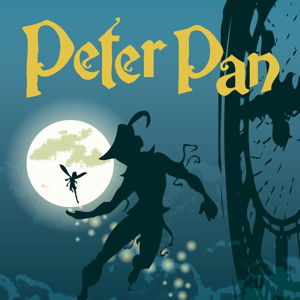
Overview
Synopsis
Peter Pan, or the Boy Who Would Never Grow Up (also known by its alternative title Peter and Wendy) is the stage play version of the classic book Peter Pan, written by J. M. Barrie in the early 1900s. Barrie’s well-known tale has been cherished for over a century, spawning countless recreations in the shape of a Broadway musical, both live action and animated movies, and various other media spinoffs from the original story. Peter Pan follows the straightforward narrative of the book it accompanies. In London live the Darlings, Mr. and Mrs., and their three children, Wendy, John, and Michael. Their efforts to maintain status in society occasionally strain the family, but Mrs. Darling is adamant that her children have room to grow into themselves with imagination and independence, so their lives go rather unremarkably well. All this changes with the arrival of Peter Pan, a young boy who escaped to a magical world called Neverland in his childhood and who has never grown with the passage of time. Peter begins to visit the Darlings’ window to eavesdrop on the bedtime stories Mrs. Darling tells her children. Mrs. Darling, who caught Peter one night, has stolen his shadow and hidden it in a drawer. In search for it, Peter enters the nursery of the Darling house with his fairy Tinkerbell one evening when the parents are out and befriends Wendy, John, and Michael. He teaches the three to fly and they happily accompany him to Neverland to stay for awhile with Peter and the Lost Boys, sons who were lost by their mothers in childhood and took up residence in Neverland instead. As soon as Wendy, John, and Michael arrive, a myriad of adventures meets them and their newly formed ‘family’ with Wendy as the mother and Peter as the father of the whole brood. Peter and his Lost Boys see fantasy everywhere they go in Neverland, playing house, swimming with mermaids, teaming up with tribes of natives, and most prominently, constantly clashing with Peter’s archnemesis, the cruel pirate Captain Hook and his gruesome shipmates. But, as Wendy and her brothers learn as their visit lengthens, not all children are meant to stay young, living in dreams and playing pretend. With this version of Peter Pan, we experience Peter, Wendy, and their companions the way they were first introduced to mainstream audiences in 1904. Returning to the source material offers an opportunity to explore in new ways the ever-relevant themes of innocence and what it means to let it go, the necessity of childhood, and the way a child’s world can be eternally shaped by the pressures exerted from outside society. When J. M. Barrie first wrote this tale, it was in defence of children being asked to grow up too soon, by a world who demanded too much of them. It is poignant how much those same ideals can reach audiences today.
Show Information
Context
Peter Pan is a very flexible piece of theatre to work with when it comes to meeting individual needs of each production. The fantasy element inherent in the story means "make-believe" is right in line with the ideals of the show itself. Directors need not limit themselves to the age or gender recommendations listed for each character here-- they are suggestions rather than fact. Additionally, the minor characters (Neverland Animals, Mermaids, and the Crocodile, for example) can be easily cut
to read the context for Peter Pan (Peter and Wendy) and to unlock other amazing theatre resources!Plot
Characters
| Name | Part Size | Gender | Vocal Part |
|---|---|---|---|
|
Lead |
Female |
|
|
|
Lead |
Male |
|
|
|
Lead |
Female |
|
|
|
Lead |
Male |
|
|
|
Lead |
Either Gender |
|
|
|
Supporting |
Male |
|
|
|
Supporting |
Male |
|
|
|
Supporting |
Either Gender |
|
|
|
Supporting |
Male |
|
|
|
Supporting |
Female |
|
|
|
Supporting |
Female |
|
|
|
Featured |
Male |
|
|
|
Featured |
Either Gender |
|
|
|
Featured |
Male |
|
|
|
Featured |
Either Gender |
|
|
|
Ensemble |
Either Gender |
|
Songs
A song with an asterisk (*) before the title indicates a dance number; a character listed in a song with an asterisk (*) by the character's name indicates that the character exclusively serves as a dancer in this song, which is sung by other characters.
Monologues
Scenes
Key Terms
Sorry! We do not currently have terms for this guide.
Videos
Quizzes
Themes, Symbols & Motifs
Sorry! We do not currently have learning modules for this guide.
Quote Analysis
Sorry! We do not currently have learning modules for this guide.
